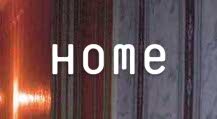Words will only be words: The Death of a Clown
Review of The Death of a Clown, by Tom Bland (Bad Betty Press)
There’s nothing particularly contentious about saying that clowns might be a bit creepy – with the clown lexicon: John Wayne Gacy, Pennywise from It, Krusty, or even Bruce Nauman’s Clown Torture – doing a decent job of cementing this into popular imagination. But there is also something a bit more intricate to clowns, the possible lack of visual intimacy where it is never known if what’s inside matches the exterior. Even Picasso’s clowns – or excuse me, harlequins – have pictorial incongruence between the image of the clown and an interior life, and that was over a hundred years ago. One of his paintings is purportedly a self-portrait of the artist as he reflects on a friend’s recent suicide, with the artist portrayed as a clown.
These discrepancies are the unseemly aspects that poet Tom Bland mines in his most recent chapbook The Death of a Clown, and there is something debauched or base to being human or a clown that cannot quite be masked (and vice versa).
Opening The Death of a Clown, many of these impressions are securely in place, reminding me of the clowns I have encountered in real life. Early in high school I knew two different clowns (separately) who got entangled in the clown-life, first jobs that were in the evening or weekends to make a little pocket money before they were old enough to get a real job. One ended up a heroin junky singing in punk bands eventually (quite good actually) and the other was the star of queer adult films later in life (quite good actually), so there’s that. However, there is something about clowns.
Perhaps in contemporary life, one aspect we seem to have in common is that our interior life is often at odds with our apparent exterior world. E.g. Instagram – with online influencers as the harlequins of our time. A clown is smiling, wearing fashionable clothing, is happy, influencing, images of the aspirational life, with friends, frolicking, the image (a clown happy while pondering a friend’s recent suicide), but how do we truly know that this role matches an inside reality, it’s better to look good than to feel good I always say, beneath the mask or makeup, and perhaps that is why so many of us are deathly afraid of clowns—they are the bared indicator of the disparity between interior and exterior life. Nobody likes to be reminded of this (Don’t cry out loud, just keep it inside, learn how to hide your feelings… E.g. Mary Jo Hansen in a wheelchair lip syncs this lyric to defend her beauty queen status in Drop Dead Gorgeous). It’s the proscription rallying against an interior, that we are not dead, and everything is not on fire, and everything is coming up Covid (jazz hands). A pedigree of surface. Yet the carpet doesn’t match the drapes.
The Death of a Clown walks through a station of the cross of sorts, reflections of being a clown, indoctrinated, failures, famous clowns, clown death (e.g.: serial killers again), these balloons aren’t going to animal themselves. But the clowns here are all of a ropier sort, not a single waif Koko as flaneur among the bunch. And it’s off to a good start with lines like:
You reminded me
of my old boss,
a sexologist who snorted coke and undressed in front of me in the kitchen,
A sordid cast of people as clowns, learning to be clowns, as clowns are not simply born, they are proselytised—oh who hurt you John Wayne Gacy; Pennywise—you weird spider thing, you (spoiler alert); Bruce Nauman; Tom Bland (again spoiler alert)…?
The magic of the clown is that it attempts to present for the exterior world something that doesn’t always appear congruent to the interior life. Hardwired out of sight. However, perhaps there are things that might only be told through the artifice of clowns. The mime attempts to convince us of the reality of a box it pantomimes when there is nothing there, and perhaps that is the conceit of clowns. It is a behaviour that is learned — there are schools for it — practicing. The narrator attempts to audition:
The clown teacher examined my outstretched hands, then remarked, ‘Do you think we are stupid? We KNOW there isn’t a box in your hands.’
I felt ashamed.
Inadequate, this is clown shade, but there’s also something about Amy:
… ‘Clowning’s a cult,’ she said, opening an empty envelope sitting between her almost finished espresso and her latex red nose. ‘Some people think the clown is a performance I put on and take off, but no, I must be a clown at all times. I can’t stand slipping back into that thing...’
That thing, being Amy. Then there is more alluding to Gacy (and even a bit on Ted Bundy who never wore a costume… but he seemed so nice… he seemed so normal, but perhaps that was the costume he performed in his pursuits…). Did you know, incidentally, that Ted Bundy’s parents lived several streets over from where I grew up, his childhood home, same neighbourhood, and look at me I turned out fine. On Gacy:
There was a clown who was also a serial killer, but he never killed as a clown.
There is something of the esoteric libertine in all these meditations on being clown by Bland, and they certainly don’t make those the same these days. With an aside, he hits his stride and perhaps the culmination around three-quarters of the way through, noting:
AUTOBIOGRAPHY IS DEAD. One day soon, when language and experience have finally reached their divorce settlement, words will only be words.
And on that note, let us end with the lovely Justin Vivian Bond as we send in the clowns. Maybe that’s what you do when words are no longer words (or vice versa).




